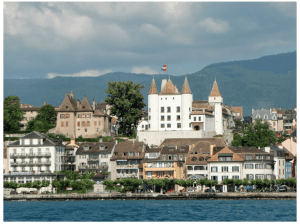“Water Goes Around” – Market Commentary
 As pressure mounts on the industry to reduce harmful emissions, fuel cell and hydrogen energy technologies are poised to enter these waters. For years we have long seen hydrogen fuel cells being used in public transport from Barcelona to Beijing. However, the challenge is to upscale these fuel cells to be used to propel ships. Fuel cells use bottled hydrogen and atmospheric oxygen to create electricity, with water being the main emission. Vessels are already being designed by companies such as Viking Ocean Cruises and NYK Line, while, many tech companies, fuel cell manufacturers and Shipowners, are busy investing in research and development. While it seems that we are still a long way off from mass production of fuel cells at competitive levels for commercial shipping, there are many initiatives, projects and companies out there with high ambitions, which means possible solutions could be here within a matter of years rather than decades.
As pressure mounts on the industry to reduce harmful emissions, fuel cell and hydrogen energy technologies are poised to enter these waters. For years we have long seen hydrogen fuel cells being used in public transport from Barcelona to Beijing. However, the challenge is to upscale these fuel cells to be used to propel ships. Fuel cells use bottled hydrogen and atmospheric oxygen to create electricity, with water being the main emission. Vessels are already being designed by companies such as Viking Ocean Cruises and NYK Line, while, many tech companies, fuel cell manufacturers and Shipowners, are busy investing in research and development. While it seems that we are still a long way off from mass production of fuel cells at competitive levels for commercial shipping, there are many initiatives, projects and companies out there with high ambitions, which means possible solutions could be here within a matter of years rather than decades.
Last year electronics maker, ABB, and Ballard Power Systems, a maker of fuel cell technology signed a MoU to develop the next-generation zero emission/ fuel cell power system for ships. The two companies propose to develop an electrical generating capacity of 3MW (4,000 horsepower) module “no bigger in size than a traditional marine engine running on fossil fuels,” according a press release. Royal Caribbean made headlines when they announced they would take delivery of one of ABB’s first fuel system as a means of additional power on their new LNG powered Icon-class vessels scheduled for delivery in 2022 and 2024.
HYON AS, a joint venture between FCHEA members Nel and Hexagon Composites, and PowerCell Sweden, received an approval-in-principle from DNV GL for their module-based fuel cell solutions, adapted for maritime use. The module-based designs can be installed above or below deck and range from 100 kW to multi-megawatt fuel cell power systems, allowing for large-scale, international shipping applications.
As part of its wider project, HYBRIDShips, Norway’s Fiskerstrand Holding AS wants to build a hydrogen-powered ferry and they have set themselves an ambitious goal to have the ferry ready by 2020.
Corvus Energy has signed a contract with Norwegian Electric Systems (NES) for the shipping industry’s largest battery package to be installed on board Havila Kystruten’s coastal vessels. The four vessels, which will operate on the Bergen-Kirkenes coastal route, will have a hybrid gas-electric propulsion system with battery, where four gas-powered engines in each vessel run the generators, and will be adapted for the use of hydrogen fuel cells.
The US is in the process of building its first fuel cell-powered ferry, the “Water-Go-Round”. The 70-foot-long aluminium catamaran is scheduled to hit the waters of San Francisco Bay in autumn 2019 and will be able to store enough hydrogen to run for up to two days between refuelling.
On the bunkering side, there is a possibility of a $5M hydrogen fuelling station being built at the Port of San Francisco supporting the Hydrogen Council’s plan for a zero-emissions ferry service. Meanwhile Norway’s Moss Maritime and Japan’s Kawasaki Heavy Industries are developing bunker and longer-haul vessels, respectively, for carrying liquid hydrogen to meet expected demand as the technology takes off. [February 2019, SPI Marine].















